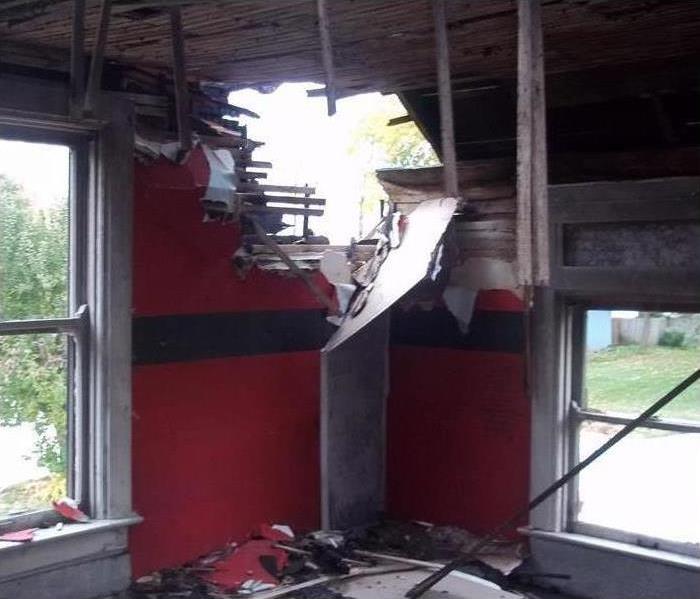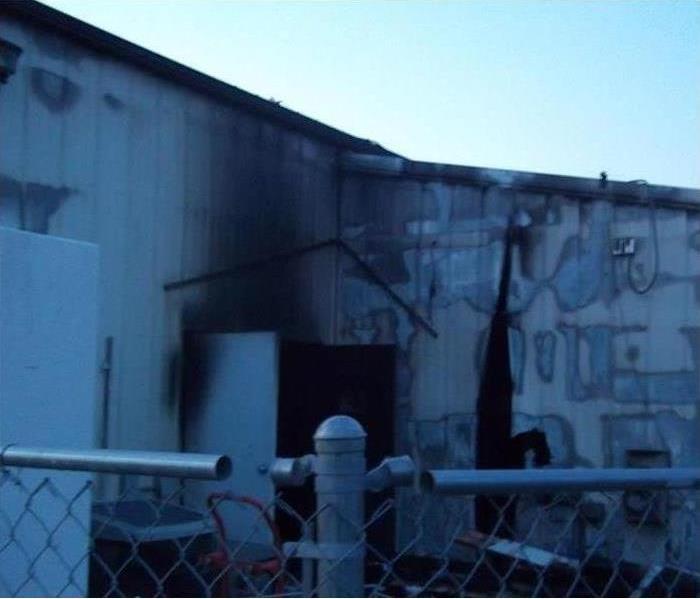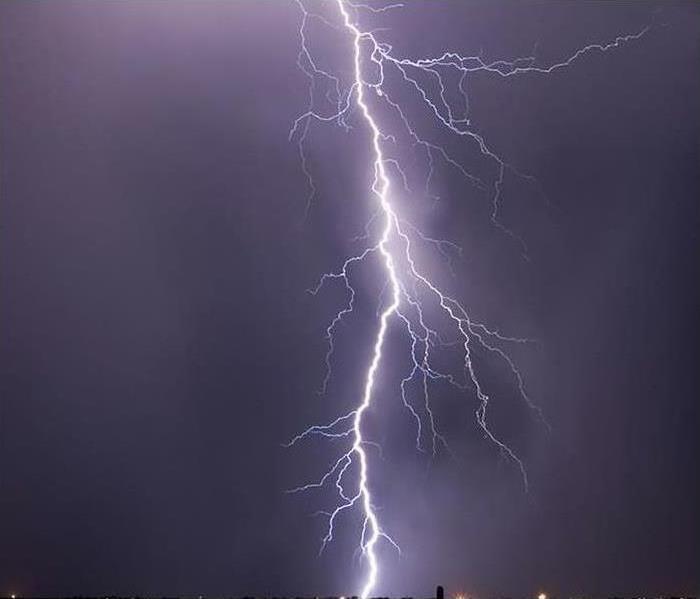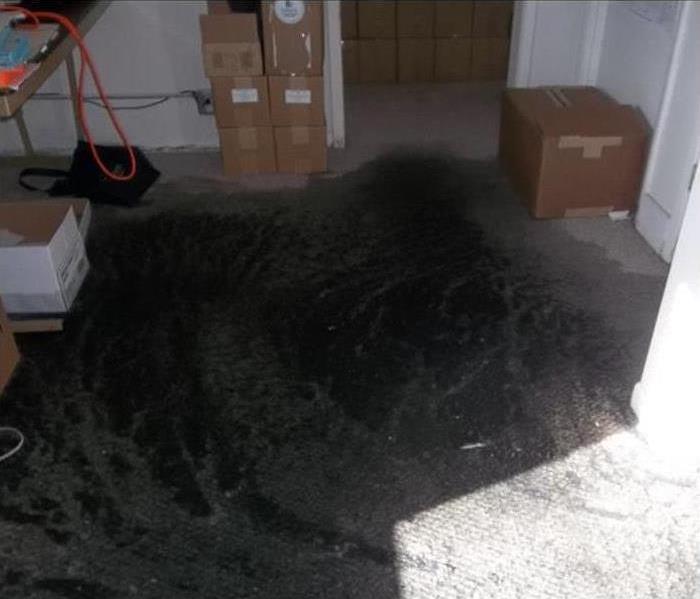Recent Posts
Storm Preparation
10/29/2024 (Permalink)
1. Stay informed. Being prepared means first and foremost to know what kind of weather is on the way. The National Weather Service provides a map of the U.S. with the latest warnings; simply click on your location to get more detailed information. Of course, you can also listen to your local weather forecast or use a weather app. In addition, keep your phone charged and on, as that will allow you to receive local weather alerts such as flood warnings.
2. Don’t leave vehicles and other expensive items outdoors. Cars, motorcycles, outdoor furniture, and even children’s playground toys, can easily get damaged due to high winds. They can also blow away and cause damage to your home. Place your vehicles in your garage or carport and put the outdoor furniture and toys inside your home or in a shed.
3. Prepare your yard. Trees, plants, and shrubs take quite a beating during storms. Most will recover by themselves, but you’re best advised to take certain precautions. If you have any plants in pots, bring them indoors to prevent them from being blown over. You should also prune back any tree branches that are close to your home and cut down dead or dying trees.
4. Install storm shutters. During high winds, your windows are vulnerable to branches and other debris blowing around. You can protect them by installing storm shutters. Make sure the shutters are properly secured before the storm starts. If you don’t have enough time to install storm shutters, you can also protect your windows by affixing sheets of plywood in front of them.
5. Clean out the gutters and storm drains. Storms can bring a lot of precipitation. Your gutters are intended to lead that water safely away from your home so it doesn’t collect and cause water damage. Check them thoroughly paying particular attention to the joints and downspouts where buildup can occur. You should also make sure your storm drains are free of leaves and other debris so water doesn't pool there.
6. Check your generator. If you rely on a generator during power outages, then you need to make sure it’s in good working order before the storm starts. Do a manual test to make sure it runs properly. In addition, make sure you have sufficient fuel to last for a few days.
7. Create an emergency kit. Your emergency kit should include at the minimum items such as bottled water, a flashlight, a first aid kit, non-perishable food, blankets, and warm clothing, phone chargers and batteries, and a radio. You should also consider placing copies of important documents such as passports, insurance policies, and medical records in your kit.
Water Damage Services
10/29/2024 (Permalink)
Chicago is called the "windy city" but sometimes it feels like it should be called the "city of flooded basements." Over the past few years, there has been an increase of flooding in the Chicago area and that's worth paying attention to.
When it comes to water damage, it can cost you more if you ignore it. Most homeowners and business owners only think of the costs of replacing products, equipment and personal property. But what about those other costs? You also have to consider costs that you might pay such as rent, loans, wages, etc. Not to mention your business would lose operating profit from not being open and the inconvenience of having to relocate.
SERVPRO of Kendall County specializes in water mitigation and restoration services. We have completed numerous restoration projects in the Oswego area. Our technicians are thoroughly trained both on-site as well as classroom instruction on restoration best practices.
Here are a few of the water damage restoration services we provide:
- Water removal
- Cleanup
- Damage restoration
- Clothing restoration
- Electronics repair
- Deodorization and carpet cleaning
- Photo documentation of the site
- Insurance coordination
10 Simple Tips to Help You Avoid Fires
10/29/2024 (Permalink)
A home is often referred to as a safe haven. Make sure your home is protected from (and your family is prepared for) a fire. Here are 10 simple tips to help you avoid fires and reduce the risk of injury should one occur:
- Smoke Alarms – These are still a very important addition to your home. Smoke alarms are widely available and inexpensive. Install a smoke alarm on every level of your home and test it monthly.
- Prevent Electrical Fires – Don’t overload circuits or extension cords. Cords and wires should never be placed under rugs or in high-traffic areas. Avoid loose electrical connections by checking the fit of the plugin in the wall outlet. If the plug loosely fits, inspect the outlet right away. A poor connection between the plug and the outlet can cause overheating and can start a fire in minutes.
- Keep Plugs Safe – Unplug all appliances when not in use. Follow the manufacturer’s safety precautions and use your senses to spot any potential disasters. If a plug is overheating, smells strange, shorts out or sparks – the appliance should be shut off immediately, then replaced or repaired.
- Alternate Heaters – Make sure there is ample space around any portable heating unit. Anything that could catch fire should be at least three feet away. Inspect your chimney annually and use fire screens to help keep any fires in the fireplace.
- Fire Safety Sprinklers – When combined with working smoke alarms, home fire sprinklers greatly increase your chance of surviving a fire. Sprinklers are affordable and they can increase property value and lower insurance rates.
- Create An Escape Route – Create and practice your escape plan with your family from every room in the house. Practice staying low to the floor and checking for hot doors using the back of your hand. It’s just like a routine school fire drill – but in your home.
- Position Appliances Carefully – Try to keep TV sets, kitchen, and other appliances away from windows with curtains. If there is a wiring problem, curtains can spread a fire quickly. Additionally, keeping your appliances away from water sources (like rain coming in from windows) can help prevent wiring damage which can lead to a fire.
- Clean Dryer Vents – Clothes dryers often start fires in residential areas. Clean the lint filter every time you start a load of clothes to dry or after the drying cycle is complete. Make sure your exhaust duct is made of metal tubing and not plastic or foil. Clean the exhaust duct with a good quality dryer vent brush to prevent blockage & check for lint build-up behind the dryer at least twice a year.
- Be Careful Around the Holidays – If you fill your home with lights during the holiday season, keep them away from anything that can easily catch fire. Check all of your lights prior to stringing them up and dispose of anything with frayed or exposed wires.
- Conduct Regular Inspections – Check all of your electronic equipment and wiring at least once a month. Taking a little time to do this each month can really pay off.
Is it Wet or Dry Smoke?
10/29/2024 (Permalink)
Different Types of Smoke
There are two different types of smoke–wet and dry. As a result, there are different types of soot residue after a fire. Before restoration begins, SERVPRO of Kendall County will test the soot to determine which type of smoke damage occurred. The cleaning procedures will then be based on the information identified during pretesting.
Smoke and soot facts:
Hot smoke migrates to cooler areas and upper levels of a structure. Smoke flows around plumbing systems, seeping through the holes used by pipes to go from floor to floor.
The type of smoke may greatly affect the restoration process.
Smoke and soot is very invasive and can penetrate various cavities within your home, causing hidden damage and odor. Our smoke damage expertise and experience allows us to inspect and accurately assess the extent of the damage to develop a comprehensive plan of action.
Wet Smoke – Plastic and Rubber
Low heat, smoldering, pungent odor, sticky, smeary. Smoke webs are more difficult to clean.
Dry Smoke – Paper and Wood
Fast burning, high temperatures, heat rises therefore smoke rises.
Did you know this about Fires?
10/11/2024 (Permalink)
Home fires can begin out of the blue, however taking preventative measures can incredibly lower the danger of a fire in your home. Although some home fires are very self-evident, it's essential to know about them and be proactive in preventing them. Here are some of the top home fire starters with tips on the best way to prevent them:
Cooking
Cooking is the main cause of home fires. Unattended cooking, and grease build-up, are the most frequent reasons for fires in the kitchen. Continuously supervise the range or stove when cooking and keep the kitchen surfaces free from grease to prevent fires.
Candles
Fires caused from candles are more frequent during holidays, such as Christmas and Halloween. Always keep candles far from draperies, embellishments and other combustibles, and ensure candle holders are steady. Utilizing battery-operated candles rather than real candles is a much safer option.
Children Playing with Fire
Some children play with fire just wondering, not understanding that it can be extremely dangerous. Keep lighters, matches and other flammables out of youngsters' sight and reach. Likewise, avoid as much as possible from using lighters and matches in front of them, as many children mimic what they see the adults do.
Heating Equipment
Amid the colder months, heating equipment, for example electric radiators or fireplaces, are major fire hazards in the home. Place radiators at a safe distance from combustible materials and always supervise them when they are operating. Check your smokestacks for creosote build-up on a regular basis and never utilize combustible fluids to begin a fire in the fireplace.
Electrical Causes
Obsolete wiring and breaker boxes, as well as old appliances, present a fire risk. Additionally, connecting excessively numerous machines to an extension cord can cause the cord or appliance to overheat and a fire to start. Watch for worn cords with exposed wires.
Smoking
Fires brought about by lit cigarettes can begin when a person nods off with a cigarette in hand or when the embers from a butt fall on ignitable materials. Smoke outside to avoid these dangers. On the off chance that you smoke inside, abstain from doing as such when tired, and use deep and large ashtrays.
Flammable Liquids
Liquids that can catch fire include gasoline, paints, cleaning agents, thinners, and much more. Keep these chemicals in approved compartments and far from electrical and heat sources. Store them outside, in a well-ventilated area. Always read the labels for temperature ranges.
Christmas Trees
Amid the Christmas season, many home fires can begin because of the careless utilization of Christmas tree adornments. Electrical failures and candles are the fundamental offenders of Christmas tree fires. Use only lights that have the mark of an independent testing laboratory. Furthermore, replace any string of lights with worn or broken cords or loose bulb connections. NEVER decorate your tree with lit candles. Water the tree on a daily basis to prevent the tree from drying out.
Commercial Fire Checklist
10/11/2024 (Permalink)
The fire services recommend this checklist to assist your small business in preventing damage that could be caused by fire:
- Avoid storing or stockpiling flammable materials such as packaging materials or waste where they could be accessed by the public, including areas immediately outside your business premises.
- Make sure all machinery is serviced as recommended by manufacturers and is kept clean. If possible, switch machinery off when the business is unattended.
- Secure all doors, windows or other access points when the business is unattended, and make sure your business has adequate lighting to deter trespassers.
- Ensure your business has an adequately serviced and functional fire alarm system that is suitable to your small business example: Remote serviced alarm systems, sprinkler systems, thermal or smoke alarms etc.
- If your business stores dangerous goods, ensure their storage and use adheres to legislative requirements.
- Make sure your business has a written and practiced fire escape plan that includes full staff lists and designated meeting points.
Storm Preparations
10/11/2024 (Permalink)
Facts about Thunderstorms
- They may occur individually, in clusters or in lines.
- Some of the most severe occur when a single thunderstorm affects one location for an extended time.
- Thunderstorms typically produce heavy rain for a brief period, anywhere from 30 minutes to an hour.
- Warm, humid conditions are highly favorable for thunderstorm development.
- About 10 percent of thunderstorms are classified as severe – one that produces hail at least an inch or larger in diameter, has winds of 58 miles per hour or higher or produces a tornado
Facts about Lightning
- Lightning’s unpredictability increases the risk to individuals and property.
- Lightning often strikes outside of heavy rain and may occur as far as 10 miles away from any rainfall.
- “Heat lightning” is actually lightning from a thunderstorm too far away from thunder to be heard. However, the storm may be moving in your direction.
- Most lightning deaths and injuries occur when people are caught outdoors in the summer months during the afternoon and evening.
- Your chances of being struck by lightning are estimated to be 1 in 600,000 but could be reduced even further by following safety precautions.
- Lightning strike victims carry no electrical charge and should be attended to immediately.
Know the Terms
Familiarize yourself with these terms to help identify a thunderstorm hazard:
Severe Thunderstorm Warning- Issued when severe weather has been reported by spotters or indicated by radar. Warnings indicate imminent danger to life and property to those in the path of the storm.
Severe Thunderstorm Watch- Tells you when and where severe thunderstorms are likely to occur. Watch the sky and stay tuned to NOAA Weather Radio, commercial radio or television for information.
Sewer Damage
10/11/2024 (Permalink)
Sewer Damage and Drain Back Up can cause serious damage to Oswego area homes. They also present health risks and should only be cleaned by certified water damage professionals. SERVPRO® of Kendall County technicians are trained to deal with sewer damage issues.
Some examples include, but are not limited to: sewage, toilet backflows that originate from beyond the toilet trap regardless of visible content or color.
Below are some basic procedures for clean up
- Identify ALL safety issues
- Determine source or Sewer back up and get problem fixed as quickly as possible
- Extract materials and/or remove all standing water
- Apply EPA registered disinfectant
- Remove and discard all contaminated porous and semi-porous structural materials included carpet and pad
- Measure and document all moisture levels in affected areas.
- Install barriers to contain damaged areas
- Install drying equipment
- Monitor job daily.
- Once completely dry. Clean all areas prior to rebuild.
When your Oswego home or business has a sewer back up, rely on the professionals at SERVPRO of Kendall County. For a free estimate call 630-554-2280
Get Mildew Smell Out of Carpet in 6 Steps
2/2/2024 (Permalink)
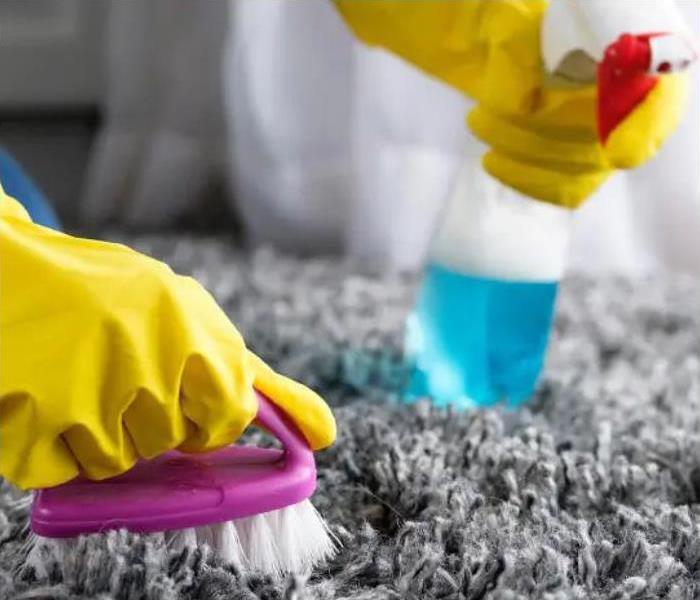 Whether it's due to spills, leaks, humidity, or lack of ventilation, it’s important to get that mildew smell out of the carpet as soon as possible.
Whether it's due to spills, leaks, humidity, or lack of ventilation, it’s important to get that mildew smell out of the carpet as soon as possible.
Step 1: Identify and Eliminate the Source
Locating the source of the odor is the first step in eradicating the mildew smell. Make sure the carpet is not damp. Check the walls and ceilings for signs of water damage or leaks. Don't forget to check under furniture.
Once the source is identified, fix any leaks or spills and thoroughly dry the area. It may be necessary to pull back the edges of the carpet or remove baseboards to allow air to circulate. Consider using a dehumidifier to eliminate moisture from the air and carpet.
Replace any water-damaged carpet padding to prevent the smell from coming back. If sections of the carpet itself are damaged, it may be necessary to cut them out and replace them.
Step 2: Vacuum the Carpet
Vacuum slowly and thoroughly, going over the entire carpeted area in overlapping passes. The vacuum may have special tools like a crevice attachment that can also come in handy for hard-to-reach areas where mildew lurks.
Empty the vacuum and wipe the filters after each use to prevent transferring mildew spores back to the carpet. You may need to vacuum a few times to get it all.
Just vacuuming won't remove the smell, but it helps by reducing mildew in carpet, making the rest of the process more efficient.
Step 3: Apply a Cleaning Solution
With the debris gone, the next step is to sanitize the carpet by applying a cleaning solution. Depending on your preference, you can use commercial carpet cleaning products or tried-and-true home remedies. If you prefer home remedies, here are some effective ones to try:
- Baking Soda/Salt: Generously sprinkle on the carpet and let it sit overnight, then vacuum.
- Alcohol: If the carpet isn’t too damp, high-proof cleaning alcohol is effective for addressing small to medium areas.
- Hydrogen Peroxide: Essentially a bleach, it must be diluted 20:1 with water and used on a completely dry carpet.
- Vinegar: An acidic, inexpensive, nontoxic solution. However, it has a strong odor and may cause skin irritation, so it should be handled with personal protective gear.
Step 4: Scrub the Carpet
For small areas, use an old scrub brush, toothbrush, or scrub pad. For larger areas, rent an electric carpet scrubber or steam cleaner. Apply the solution and scrub in small circles, working from the outside in. Let the solution sit for at least 30 minutes unless the label's instructions say otherwise.
After applying the cleaning product, use a towel or a wet/dry vac to absorb as much moisture as possible. Rinse thoroughly with water to remove any remaining residue. You may need to repeat this step a few times for tough stains. Be careful not to oversaturate the carpet with liquid.
Once you’re done scrubbing, open windows to ventilate and speed up the drying time. Running an air purifier with a HEPA filter can also help eliminate any remaining musty smells in the room.
Step 5: Let It Dry
Now that as much of the water as possible is soaked up, it’s time to let the carpet air dry completely.
Leave the windows open and use fans to speed up drying time. The faster the carpet dries, the less chance the mildew smell has to settle in and spread. Continue to circulate the air around the damp area with fans. Turn on any overhead or portable fans to keep the air moving.
Aiming a fan directly at the damp area of the carpet will speed up evaporation. For small, isolated areas, it may take 8 to 12 hours to dry the area completely. Wall-to-wall carpet or carpet in rooms with little air circulation may take 24 hours or longer to dry completely.
Leaving the carpet damp for too long allows mildew to grow rapidly. Prioritize drying the carpet quickly to avoid a full-on mildew infestation. Speedy drying, combined with the suggested cleaning steps, should leave the carpet mildew-free and smelling fresh again.
Step 6: Deodorize
Baking soda is a natural odor absorber that can help freshen the carpet. Sprinkle baking soda liberally over the entire carpeted area. Let it sit for at least a few hours or overnight. The baking soda should absorb the mildew and musty smells from the carpet.
Vacuum the baking soda thoroughly using the hose or brush attachment on the vacuum. You may need to go over the area a few times to pick up all the baking soda granules.
For tough smells, try using activated charcoal, which is very porous and effective at absorbing odors. Place containers of activated charcoal around the room. Replace or refresh the charcoal every month or so.
Commercial carpet deodorizers and powders can also help eliminate odors. Look for natural, fragrance-free products, and always follow the directions carefully. Reapply as needed until the musty smell has disappeared.
Be Aware of How Fires Start
10/9/2023 (Permalink)
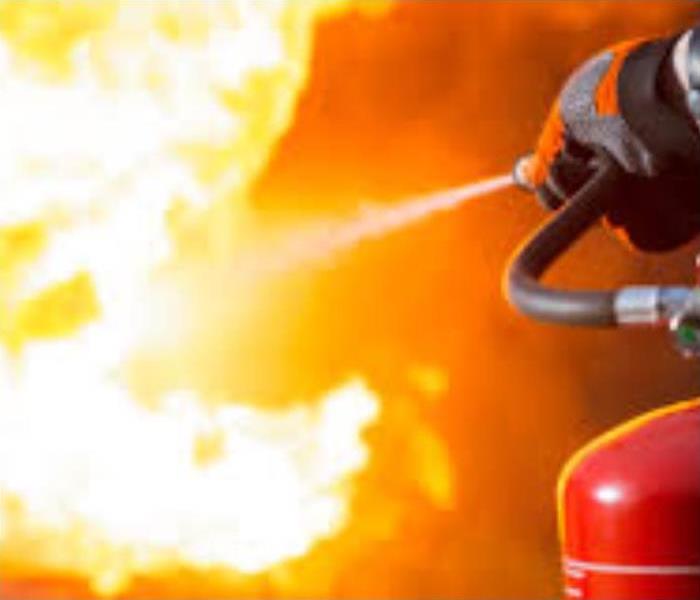 Recognizing fire hazards, can help ensure you stop blazes before they start.
Recognizing fire hazards, can help ensure you stop blazes before they start.
You know building fires can be destructive, but are you familiar with the most common fire starters in homes and businesses? By recognizing these fire hazards, you can take steps to ensure you stop blazes before they start.
Unattended Kitchen Appliances
The kitchen is the most fire-prone room in your home. If you own a restaurant or other business with cooking equipment, it’s vital to never leave appliances unattended. Likely hazards include grease becoming overheated, bread toasting too long, or a cookbook getting too close to an open flame, and they are all enough to start a fire.
Unsafe Cooking Methods
Keep the cooking area clean and roll up your sleeves so they can’t catch fire over a hot stove. Only place microwave-safe dishes in the microwave. Remain alert when cooking and keep kids and pets out of the kitchen. Never cook while under the influence of alcohol.
Worn Out Electrical Cords
Frayed or damaged cords are common fire starters in both homes and businesses. Exposed wires heat up and could ignite surrounding textiles, including the carpet or an area rug. Keep an eye on the condition of your electrical cords and keep your pets from chewing them so they remain in good condition.
Overloaded Power Strips
This situation is particularly common during the holidays when homeowners overpower a single outlet with too many Christmas lights. Use only heavy duty extension cords and avoid overloading the circuit, which can cause a spark and create a serious fire hazard.
Malfunctioning Electrical Appliances
Most homes and businesses rely on electrical appliances for daily tasks. Any of these are prone to malfunction at one point or another, especially toward the end of the equipment’s lifespan. Malfunctions sometimes result in a spark, which is obviously a substantial fire hazard. Faulty coffee makers, toasters, TVs, laptops and other electronics have been to blame for serious fires.
Flammable Products Placed Near Sources of Ignition
There are countless examples of flammable products igniting when they come in contact with sources of heat. A lamp shade touching a hot light bulb, curtains situated too close to an electric space heater, and an aerosol spray can used near the stove are just a few examples.
Unattended Candles
Candles lead to hundreds of house fires every year. Make sure you never place a burning candle near curtains, lampshades or anything else flammable. Place candles in adequate holders and place them on a steady surface away from the edge. Even with these precautions, never leave burning candles unattended. All it takes is a moment for a child or pet to nudge the candle or knock it over.
Fireplace or Wood Stove
When used improperly, fireplaces and wood stoves are common fire starters. Make sure the chimney is unobstructed before burning anything. Wait to dispose of ashes until they are completely cool to the touch. Even the tiniest smoldering embers could start a fire in the trash can.
Unsafe Smoking Practices
Cigarettes are a substantial fire hazard. Habits such as smoking in bed, leaving lit cigarettes unattended, or emptying the contents of an ashtray before they cool are the cause of hundreds of fires every year. Your best bet is to smoke outside and dispose of cigarettes in noncombustible containers, not in flower pots or as litter on the street.
Matches and Lighters
If these get into the hands of children, they can become lethal, fire-starting weapons. If you smoke, keep only one lighter or book of matches accessible at a time, and keep them with you. Teach your children to take matches and lighters seriously and to tell an adult if they find any lying around.
If your home or business has experienced the devastating results of fire starters, professional restoration services from SERVPRO of Kendall County can help you get back on your feet.





 24/7 Emergency Service
24/7 Emergency Service
